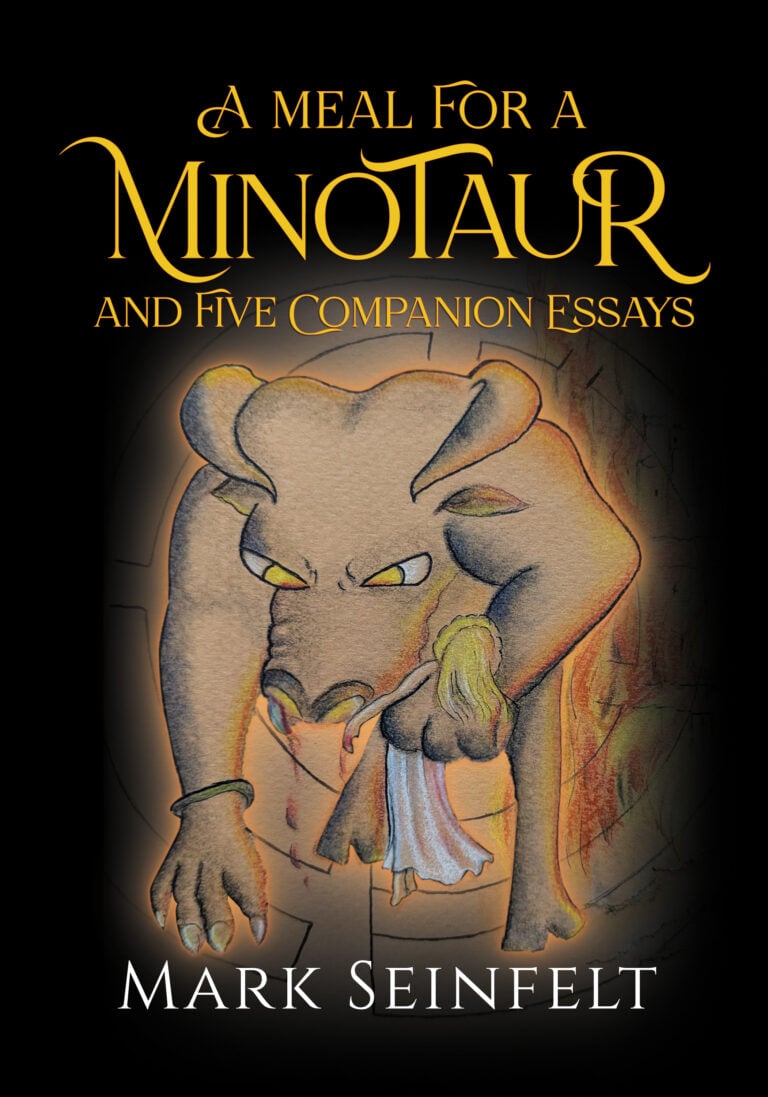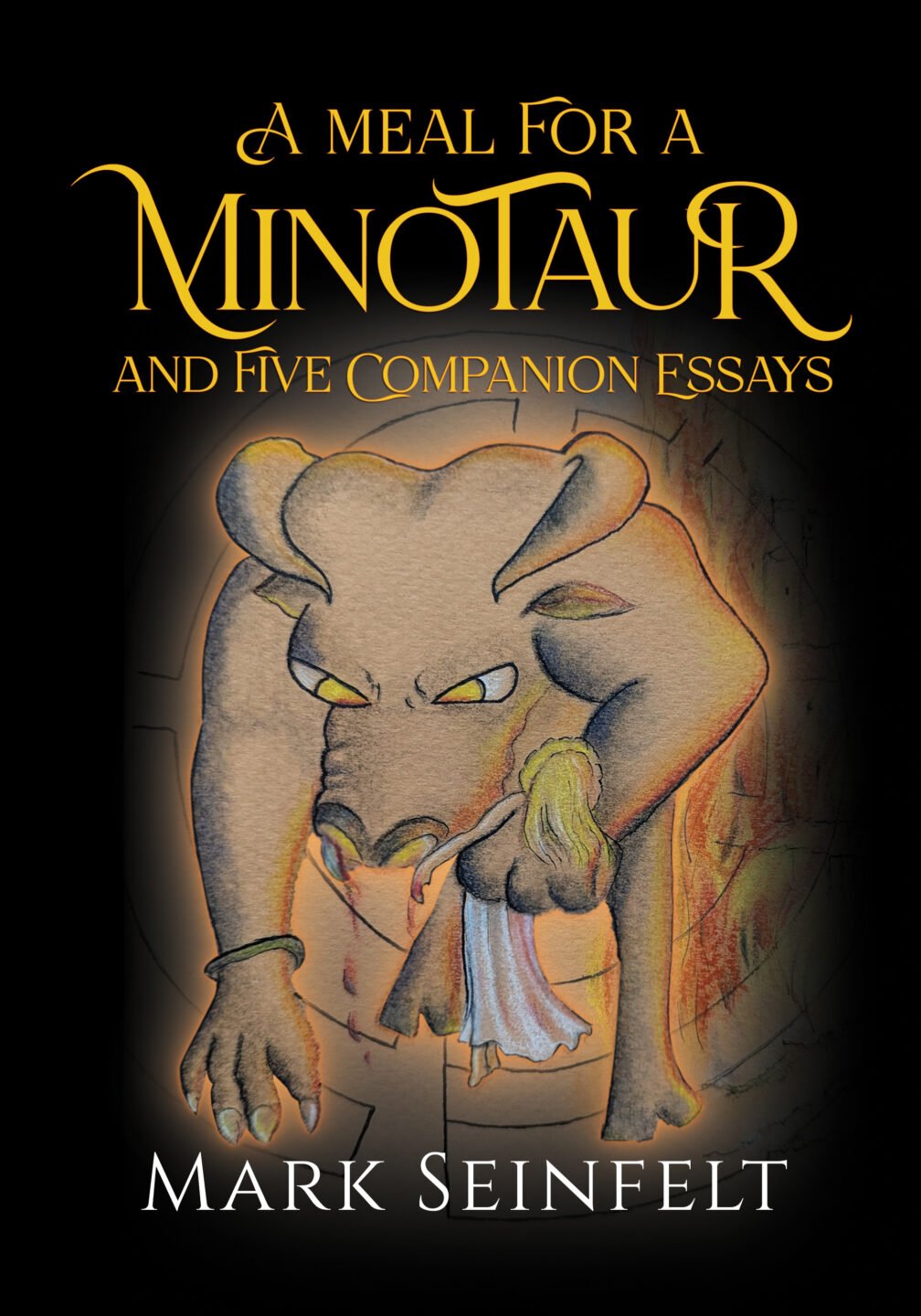Mark Seinfelt’s A MEAL FOR A MINOTAUR AND FIVE COMPANION ESSAYS combines a novel (a Bildungsroman concerning the spiritual and psychological re-education of Theseus) with five essays, collectively exploring themes of memory, guilt, and redemption through the lens of classical mythology.
The novel, designated “Labyrinth,” begins with an aged Theseus trapped within the labyrinthine Omnipleroma: a mystical, atemporal “egg” or realm of origins. Alongside him is Helen of Troy, whom he may have kidnapped and violated as a child—an event he cannot clearly recall. Helen, who shifts between an adult, goddess-like form and that of a child, serves as his guide through a maze “far more twisted and complex than the dreaded maze of Minos which Theseus threaded as a boy.”
Theseus, burdened with guilt, pieces together his fragmented memories, such as the slaying of the first Minotaur, his problematic relationships with women, and the tragic death of his son Hippolytus. His journey becomes an internal struggle when Theseus learns that the monstrous “new Minotaur” he must confront “is in fact a part of himself, an integral aspect of his own identity.”
Complementing this narrative are five “Clew” essays, which delve into related territories—from authorial suicide (“At the Lip of the Volcano…”) to mythic parallels (“The Birth and Investiture of Skanda”) and literary theory (“The Leitmotiv’s Literary Origins”)—offering further insight into the novel’s themes. These diverse pieces, presented as potential keys or parallel explorations, serve to deepen the complex landscape introduced in the main narrative.
Seinfelt’s highly allusive, densely woven prose mirrors the labyrinth Theseus navigates, laden with mythological and philosophical contemplation while frequently shifting perspective and temporality: “Yes, each of these numberless lacunae, bubbles of no-time, endless as the stars in heaven, merged together in a single unfilled yet incredibly crowded interval, pause, or gap, and Theseus was caught, yes enwombed in this said gap or bubble where simultaneously all things passed without precise boundaries into one another.” This intricate style extends into the companion essays, demanding considerable focus throughout the book.
A MEAL FOR A MINOTAUR is a work of formidable intellectual ambition and philosophical depth, but it’s ultimately more of a scholarly exercise than a piece of organic storytelling. Its heavy focus on mythological connections and recursive self-analysis may prove taxing for readers unfamiliar with classical literature or theory. However, those willing to engage with these complex ideas will find a challenging but rewarding exploration of the hero’s confrontation with his own inner labyrinth.
Intellectually ambitious and stylistically dense, Mark Seinfelt’s A MEAL FOR A MINOTAUR AND FIVE COMPANION ESSAYS is a demanding read best suited for those prepared for its scholarly depth.
~Edward Sung for IndieReader


